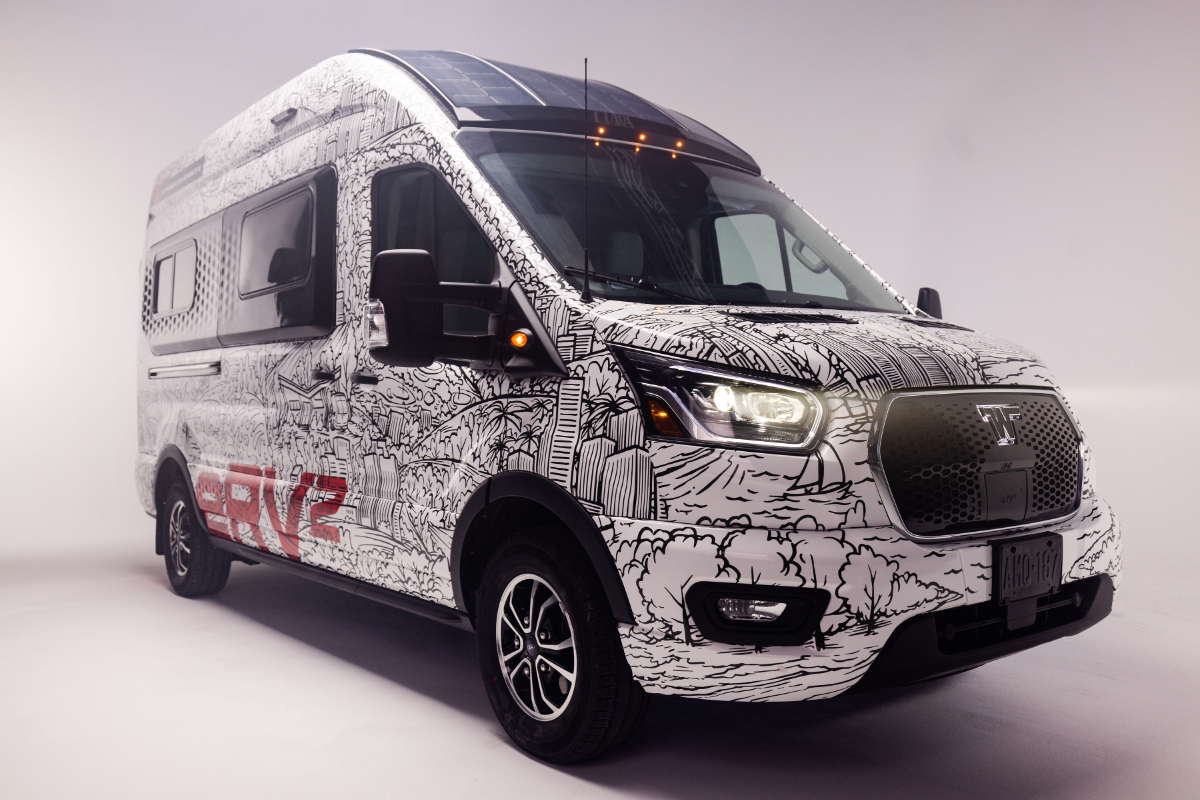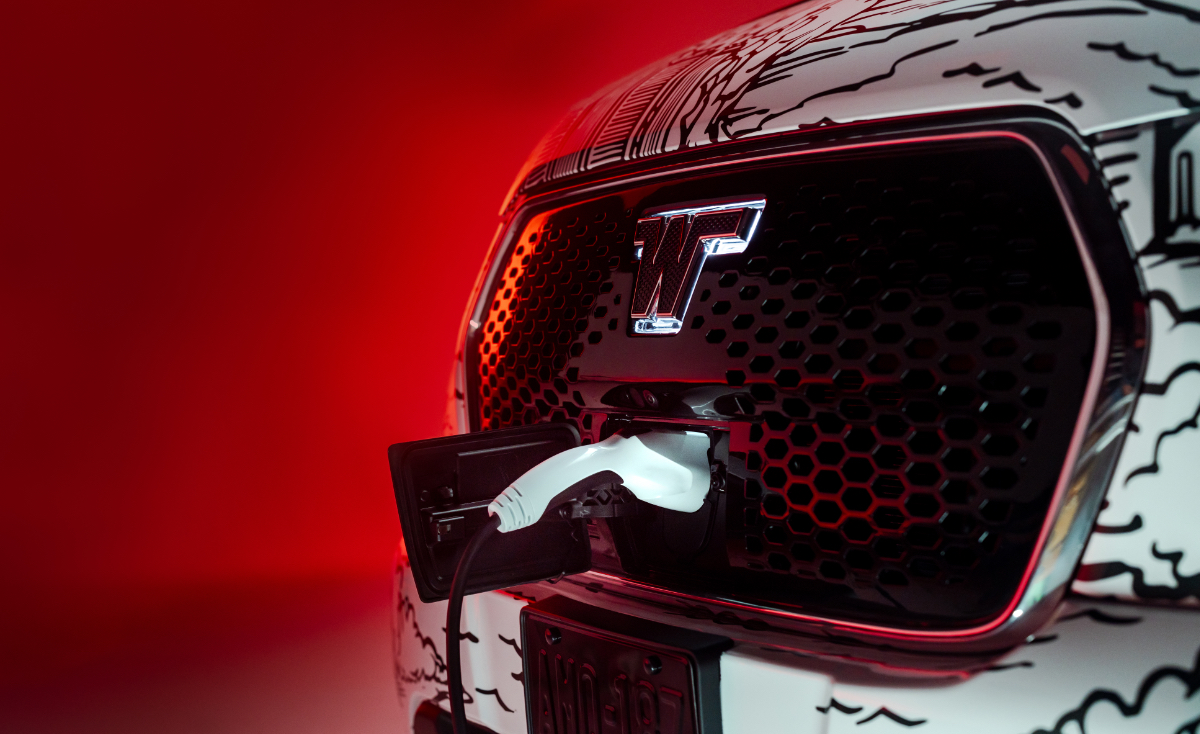Winnebago Reveals Second-Generation Electric Camper Van Prototype
At last year’s Florida RV SuperShow in Tampa, Winnebago made headlines by unveiling its first all-electric camper van. Now, almost exactly one year later, the company is back with a second-generation model that is even more environmentally friendly than the original. And while this new model remains a prototype for now, it is inching closer to becoming a vehicle that RVers can actually buy.

Photo Credit: Winnebago
Dubbed the eRV2, the next-generation electric vehicle rides on the Ford Transit Van platform. It is powered by a proprietary battery bank called IonBlade, which Winnebago developed in conjunction with Lithionics Battery. The system can store more than 15,000 watt-hours of electricity and comes with factory-installed 900-watt solar panels. This gives the vehicle—which supports DC fast-charging—a range of roughly 108 miles on a single charge. Those same power cells feature a thin and flat design that allows them to store neatly under the floor of the van without impacting interior space.
The camper van’s living space took inspiration from both Japanese and Scandinavian design elements. It has a clean and open look, along with multifunctional furnishings that facilitate work, rest, and play. It has a five-in-one sleep/lounge area and two independent, adaptable workspaces with charging ports. Digital nomads will also appreciate the eRV2’s built-in high-speed Wi-Fi router, which can keep travelers connected to the internet wherever they roam.

Photo Credit: Winnebago
In addition to its no-emissions electric drive system, the eRV2 has a number of other eco-friendly features to help minimize its impact on the planet. Those include cab seat coverings made from renewable plant-based materials and biodegradable acrylic countertops. Additionally, recycled materials are featured prominently in the van’s flooring, window frames, floor mats, and mattress. It even comes with interior lighting that shifts from white to red. This reduces the amount of light pollution generated at the campsite, limiting the impact on plants and animals.
“Our primary goal in building the eRV2 was to help people comfortably explore the world around them with less environmental impact,” said Winnebago president Huw Bower in a press release. “The eRV2 embodies our pioneering legacy, representing not only an achievement in design, innovation and sustainability, but also our commitment to continuously evolve with the changing needs of consumers and the world we share.”

Photo Credit: Winnebago
Compared to the original e-RV from 2022, the new model has received some substantial upgrades. For instance, this year’s version comes with more powerful electric motors that produce 266 horsepower. It also has a 48-volt air conditioning system that is 30% more efficient than traditional units, saving battery life while camping off grid. The eRV2 is also equipped with an electric induction stove and a compressor-driven refrigerator, both of which draw power from the van’s batteries. Its fresh and gray water tanks got an upgrade, too, and are now 30 and 24 gallons in size, respectively.
Part of the process for designing the eRV2 was learning more about what consumers are looking for in an electric camper van. To accomplish that, Winnebago conducted a study that involved more than 1,200 people who shared their thoughts on the future of EVs for travel and camping. That research indicated that potential owners are looking for superior vehicle performance, outstanding driver assist technology and potential cost savings from reduced maintenance and gas. The study also revealed that many consumers are looking for a vehicle they can comfortably drive for three hours before taking a break to recharge its batteries.

Photo Credit: Winnebago
While Winnebago says that most RVers tend to stay within a three-hour drive from home, the range of the eRV2 remains somewhat of a concern. At 108 miles, drivers would need to stop to charge every 1.5-2 hours—a process that takes at least 45 minutes and most likely longer. That isn’t optimal for most travelers, but thankfully the company says its exploring new technologies that will extend the range of future iterations of the camper van.
Despite having another year to evolve and mature, the eRV2 isn’t quite ready to go into production just yet. Winnebago recognizes that there is pent-up demand for an electric camper, but it won’t commit to a commercial launch date until the vehicle fully adheres to its high standards. The company promises further updates on the van later this year, so for now, we’ll all just have to stay patient.
Attendees at the Florida RV SuperShow can check out the eRV2 at the Winnebago booth (#760) on the show floor. There, you’ll also be able to sign up for a 15-minute test drive or visit the Winnebago website for more information.
The post Winnebago Reveals Second-Generation Electric Camper Van Prototype appeared first on RV.com.






